Mexico Oral Anti-Diabetic Drug Market Size
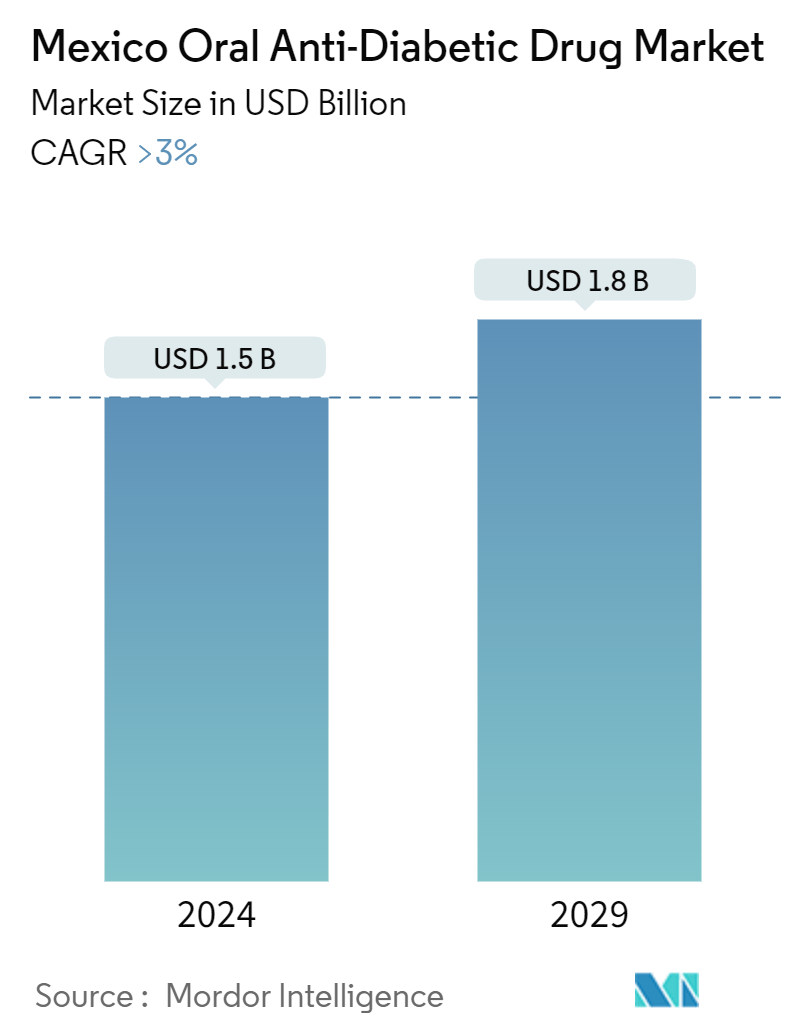
| Study Period | 2019 - 2029 |
| Base Year For Estimation | 2023 |
| Forecast Data Period | 2024 - 2029 |
| Market Size (2024) | USD 1.5 Billion |
| Market Size (2028) | USD 1.8 Billion |
| CAGR (2024 - 2029) | > 3.00 % |
Major Players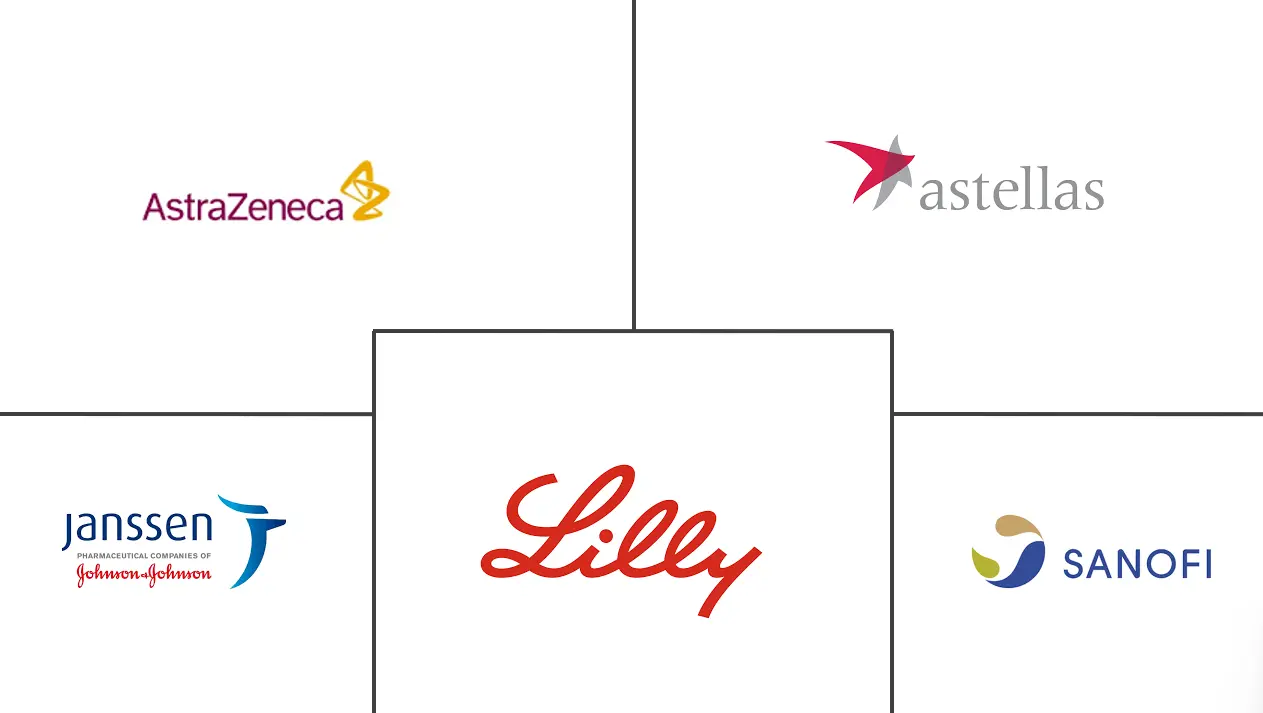
*Disclaimer: Major Players sorted in no particular order |
Need a report that reflects how COVID-19 has impacted this market and its growth?
Mexico Oral Anti-Diabetic Drug Market Analysis
The Mexico Oral Anti-Diabetic Drug Market size is estimated at USD 1.5 billion in 2024, and is expected to reach USD 1.8 billion by 2028, growing at a CAGR of greater than 3% during the forecast period (2024-2028).
Additionally, 11 million adults in the country have Impaired Glucose tolerance (IGT), which places them at high risk of developing type 2 diabetes. Diabetes-related health expenditure in Mexico has reached USD 20 billion, putting it in the top ten countries or territories with the highest total health expenditure. Under half (47.5%) of people living with diabetes in the country are undiagnosed.
When diabetes is undetected or inadequately treated, people with diabetes are at risk of severe and life-threatening complications, such as heart attack, stroke, kidney failure, blindness, and lower-limb amputation. These result in reduced quality of life and higher healthcare costs, leading to a greater need for access to care.
In Mexico, diabetes, especially Type 2, has become a healthcare burden as it is the primary cause of death among women and the secondary cause of death among men. Obesity, sedentarism, lousy eating habits, genetics, family background, and age are among the factors that lead to developing diabetes. Therefore, owing to the factors above, the studied market is anticipated to grow over the analysis period.
Mexico Oral Anti-Diabetic Drug Market Trends
Sulfonylureas Segment Occupied the Highest Market Share in the Mexico Oral Anti-Diabetic Drugs Market in the current year.
Regarding revenue, the Sulfonylureas segment is anticipated to lead the Mexico Oral Anti-Diabetic Drugs Market and post a CAGR of over 1% during the forecast year.
In Mexico, approximately 25% of patients with type 2 diabetes (T2D) have adequate glycemic control. Polymorphisms in pharmacogenetic genes have been shown to have clinical consequences resulting in drug toxicity or therapeutic inefficacy. The most prevalent kind of adult-onset diabetes is kind 2 Diabetes Mellitus (T2DM).
T2DM is linked to various side effects, including blindness, lower limb amputation, and early mortality. Treatment for Type 2 Diabetes Mellitus (T2DM) essentially entails the use of oral anti-diabetic medications (OADs), such as sulfonylureas (SUs) and biguanides, which inhibit the synthesis of hepatic glucose. There are currently several classes of oral diabetes medications (OADs), most of which work by increasing insulin secretion (sulfonylureas), decreasing hepatic glucose production (biguanides), delaying the breakdown and absorption of intestinal carbohydrates (alpha-glucosidase inhibitors), or enhancing insulin function. (thiazolidinediones). Sulfonylureas (SUs) target an ATP-dependent potassium (K-ATP) channel in pancreatic β-cells.
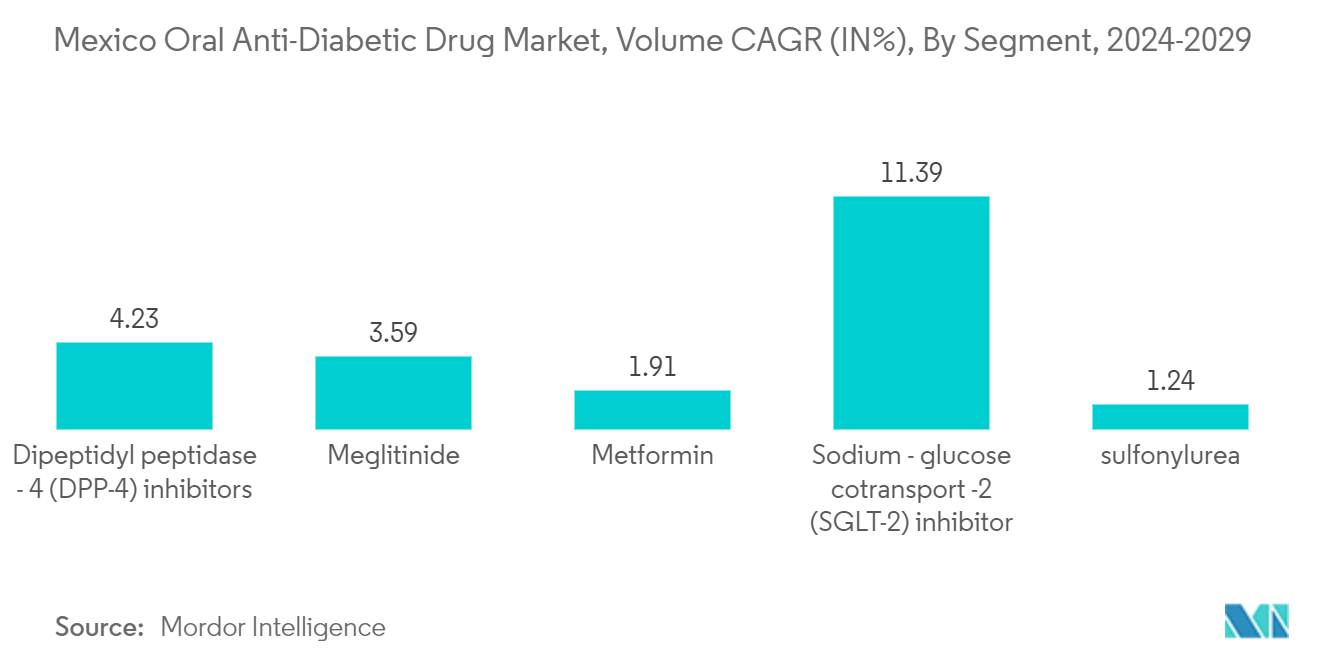
The increasing Diabetes Population in Mexico is driving the market.
In recent years, diabetes prevalence has alarmingly increased in Mexico. Patients with diabetes must make several adjustments during the day to keep their blood glucose levels within acceptable ranges. Examples include taking oral anti-diabetic medicine or consuming more carbs while monitoring their blood glucose levels. Obesity, a poor diet, and lack of exercise are the primary causes of the rise in newly diagnosed Type 1 and Type 2 diabetes cases. Diabetes medicine consumption is on the rise, as evidenced by the fast-rising incidence, prevalence, and healthcare costs of diabetes individuals.
Oral anti-diabetic medications have been made available globally and are advised for usage when type 2 diabetes therapy needs to be escalated along with lifestyle modification. Due to the wide variety of effectiveness, safety, and modes of action, oral medicines are frequently the first treatments employed in treating type 2 diabetes. Diabetes patients can minimize their complications risk and maintain their illness control using anti-diabetic medications. For the rest of their lives, people with diabetes may need to take anti-diabetic drugs to manage their blood sugar levels and prevent hypo and hyperglycemia.
Oral anti-diabetic medication has higher acceptability than insulin, improving therapy adherence. They also have the advantages of easier control and cheaper cost. People experiencing poverty were denied access to services and were in danger of financial hardship due to a lack of health insurance. Many nations, like Mexico, have implemented community-based, national, and targeted public health insurance to safeguard the populace against exorbitant health costs. There are several health insurance companies in Mexico.
Government employees are covered by the Instituto de Seguridad y Servicios Sociales de los Trabajadores del Estado (ISSSTE; State Employees Social Security and Social Services Institute), while employees in the private sector are covered by the Instituto Mexicano del Seguro Social (IMSS; Mexican Social Security Institute). To shield people of working age from high medical expenditures, the Seguro Popular (People's Insurance) was established.
Enrollment in the Seguro Popular is not based on health or pre-existing conditions, there is no co-payment based on the kind of medical treatment obtained, and family payments are purely based on financial capability. The Mexican government's many measures are anticipated to fuel the market's expansion. To assure affordable medicine pricing, the Mexican government collaborated with various private businesses to use their supply chains (production, distribution, and retailing).
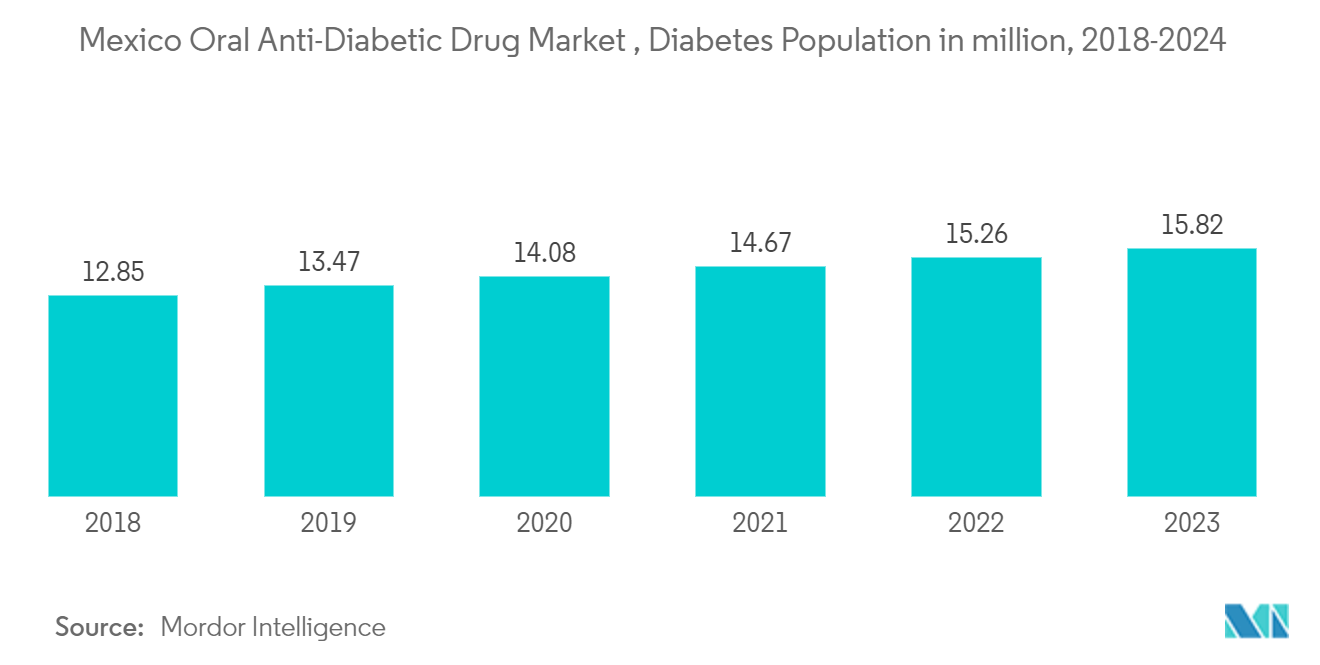
Mexico Oral Anti-Diabetic Drug Industry Overview
The Mexico oral anti-diabetes drug market is consolidated, with a few major manufacturers like Eli Lilly, AstraZeneca, Sanofi, and Janssen Pharmaceuticals having a global market presence, while the remaining manufacturers are confined to the other local or regional markets. Companies are focusing on innovations in diabetes drugs.
Mexico Oral Anti-Diabetic Drug Market Leaders
-
Astrazeneca
-
Astellas
-
Janssen
-
Eli Lilly
-
Sanofi
*Disclaimer: Major Players sorted in no particular order
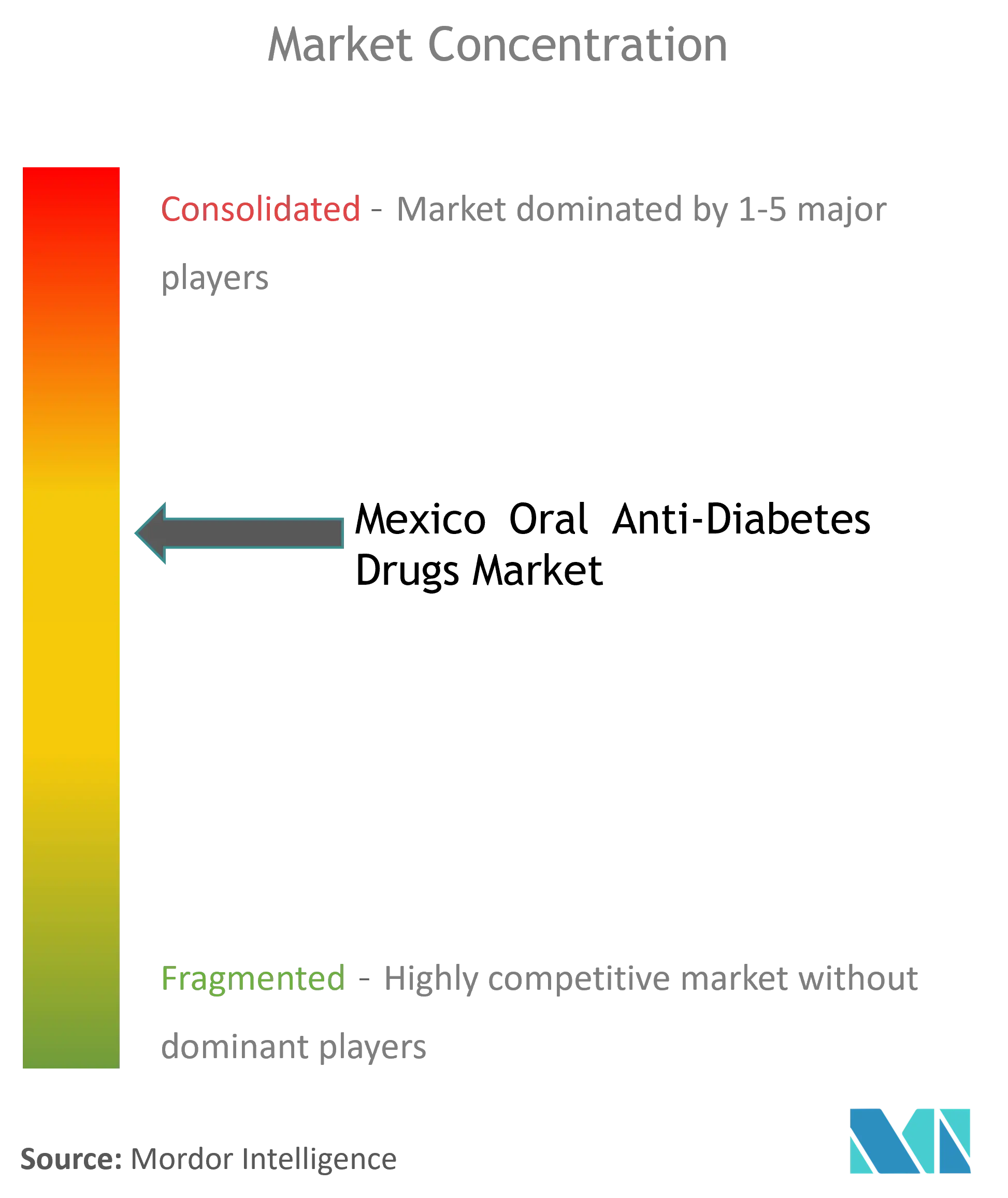
Mexico Oral Anti-Diabetic Drug Market News
- June 2023: The FDA has approved the drugs Jardiance and Synjardy to be taken by children ages 10 and older who have type 2 diabetes.
- March 2022: Eli Lilly and Boehringer Ingelheim gained approval, for heart failure treatment from the EU for sodium-glucose co-transporter-2-inhibitor (SGLT2-I), Jardiance (empagliflozin).
Mexico Oral Anti-Diabetic Drug Market Report - Table of Contents
1. INTRODUCTION
1.1 Study Assumptions and Market Definition
1.2 Scope of the Study
2. RESEARCH METHODOLOGY
3. EXECUTIVE SUMMARY
4. MARKET DYNAMICS
4.1 Market Overview
4.2 Market Drivers
4.3 Market Restraints
4.4 Porter's Five Forces Analysis
4.4.1 Bargaining Power of Suppliers
4.4.2 Bargaining Power of Consumers
4.4.3 Threat of New Entrants
4.4.4 Threat of Substitute Products and Services
4.4.5 Intensity of Competitive Rivalry
5. MARKET SEGMENTATION
5.1 Oral Anti-diabetic drugs
5.1.1 Biguanides
5.1.1.1 Metformin
5.1.2 Alpha-Glucosidase Inhibitors
5.1.2.1 Alpha-Glucosidase Inhibitors
5.1.3 Dopamine D2 receptor agonist
5.1.3.1 Bromocriptin
5.1.4 SGLT-2 inhibitors
5.1.4.1 Invokana (Canagliflozin)
5.1.4.2 Jardiance (Empagliflozin)
5.1.4.3 Farxiga/Forxiga (Dapagliflozin)
5.1.4.4 Suglat (Ipragliflozin)
5.1.5 DPP-4 inhibitors
5.1.5.1 Onglyza (Saxagliptin)
5.1.5.2 Tradjenta (Linagliptin)
5.1.5.3 Vipidia/Nesina(Alogliptin)
5.1.5.4 Galvus (Vildagliptin)
5.1.6 Sulfonylureas
5.1.6.1 Sulfonylureas
5.1.7 Meglitinides
5.1.7.1 Meglitinides
6. MARKET INDICATORS
6.1 Type-1 Diabetic Population
6.2 Type-2 Diabetic Population
7. COMPETITIVE LANDSCAPE
7.1 COMPANY PROFILES
7.1.1 Takeda
7.1.2 Novo Nordisk
7.1.3 Pfizer
7.1.4 Eli Lilly
7.1.5 Janssen Pharmaceuticals
7.1.6 Astellas
7.1.7 Boehringer Ingelheim
7.1.8 Merck And Co.
7.1.9 AstraZeneca
7.1.10 Bristol Myers Squibb
7.1.11 Novartis
7.1.12 Sanofi
- *List Not Exhaustive
8. MARKET OPPORTUNITIES AND FUTURE TRENDS
Mexico Oral Anti-Diabetic Drug Industry Segmentation
Orally administered antihyperglycemic drugs reduce blood glucose levels. Diabetes medications are employed to manage diabetes mellitus by reducing the glucose concentration in the bloodstream. Apart from insulin, the majority of GLP receptor agonists (such as liraglutide, exenatide, and others) and pramlintide are taken orally, earning them the name of oral hypoglycemic agents or oral antihyperglycemic agents. The Mexico Oral Anti-Diabetic Drug Market is segmented into drugs. The report offers the value (in USD) and volume (in Units) for the above segments.
| Oral Anti-diabetic drugs | ||||||
| ||||||
| ||||||
| ||||||
| ||||||
| ||||||
| ||||||
|
Mexico Oral Anti-Diabetic Drug Market Research Faqs
How big is the Mexico Oral Anti-Diabetic Drug Market?
The Mexico Oral Anti-Diabetic Drug Market size is expected to reach USD 1.5 billion in 2024 and grow at a CAGR of greater than 3% to reach USD 1.8 billion by 2028.
What is the current Mexico Oral Anti-Diabetic Drug Market size?
In 2024, the Mexico Oral Anti-Diabetic Drug Market size is expected to reach USD 1.5 billion.
Who are the key players in Mexico Oral Anti-Diabetic Drug Market?
Astrazeneca, Astellas, Janssen, Eli Lilly and Sanofi are the major companies operating in the Mexico Oral Anti-Diabetic Drug Market.
What years does this Mexico Oral Anti-Diabetic Drug Market cover, and what was the market size in 2023?
In 2023, the Mexico Oral Anti-Diabetic Drug Market size was estimated at USD 1.46 billion. The report covers the Mexico Oral Anti-Diabetic Drug Market historical market size for years: 2019, 2020, 2021, 2022 and 2023. The report also forecasts the Mexico Oral Anti-Diabetic Drug Market size for years: 2024, 2025, 2026, 2027, 2028 and 2029.
Mexico Oral Anti-Diabetic Drug Industry Report
Statistics for the 2024 Mexico Oral Anti-Diabetic Drug market share, size and revenue growth rate, created by Mordor Intelligence™ Industry Reports. Mexico Oral Anti-Diabetic Drug analysis includes a market forecast outlook to for 2024 to 2029 and historical overview. Get a sample of this industry analysis as a free report PDF download.

